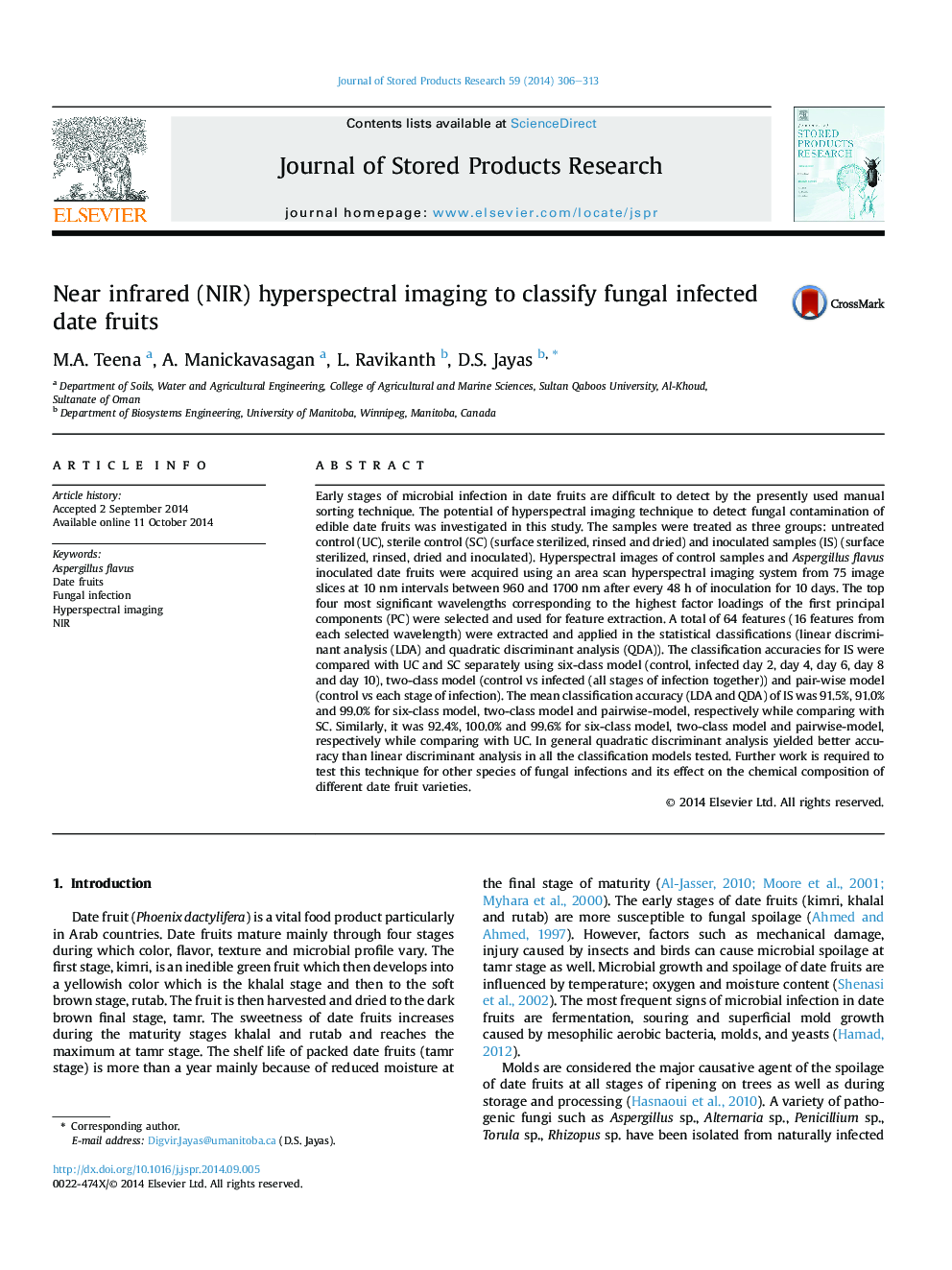| Article ID | Journal | Published Year | Pages | File Type |
|---|---|---|---|---|
| 6378488 | Journal of Stored Products Research | 2014 | 8 Pages |
Abstract
Early stages of microbial infection in date fruits are difficult to detect by the presently used manual sorting technique. The potential of hyperspectral imaging technique to detect fungal contamination of edible date fruits was investigated in this study. The samples were treated as three groups: untreated control (UC), sterile control (SC) (surface sterilized, rinsed and dried) and inoculated samples (IS) (surface sterilized, rinsed, dried and inoculated). Hyperspectral images of control samples and Aspergillus flavus inoculated date fruits were acquired using an area scan hyperspectral imaging system from 75 image slices at 10 nm intervals between 960 and 1700 nm after every 48 h of inoculation for 10 days. The top four most significant wavelengths corresponding to the highest factor loadings of the first principal components (PC) were selected and used for feature extraction. A total of 64 features (16 features from each selected wavelength) were extracted and applied in the statistical classifications (linear discriminant analysis (LDA) and quadratic discriminant analysis (QDA)). The classification accuracies for IS were compared with UC and SC separately using six-class model (control, infected day 2, day 4, day 6, day 8 and day 10), two-class model (control vs infected (all stages of infection together)) and pair-wise model (control vs each stage of infection). The mean classification accuracy (LDA and QDA) of IS was 91.5%, 91.0% and 99.0% for six-class model, two-class model and pairwise-model, respectively while comparing with SC. Similarly, it was 92.4%, 100.0% and 99.6% for six-class model, two-class model and pairwise-model, respectively while comparing with UC. In general quadratic discriminant analysis yielded better accuracy than linear discriminant analysis in all the classification models tested. Further work is required to test this technique for other species of fungal infections and its effect on the chemical composition of different date fruit varieties.
Related Topics
Life Sciences
Agricultural and Biological Sciences
Agronomy and Crop Science
Authors
M.A. Teena, A. Manickavasagan, L. Ravikanth, D.S. Jayas,
